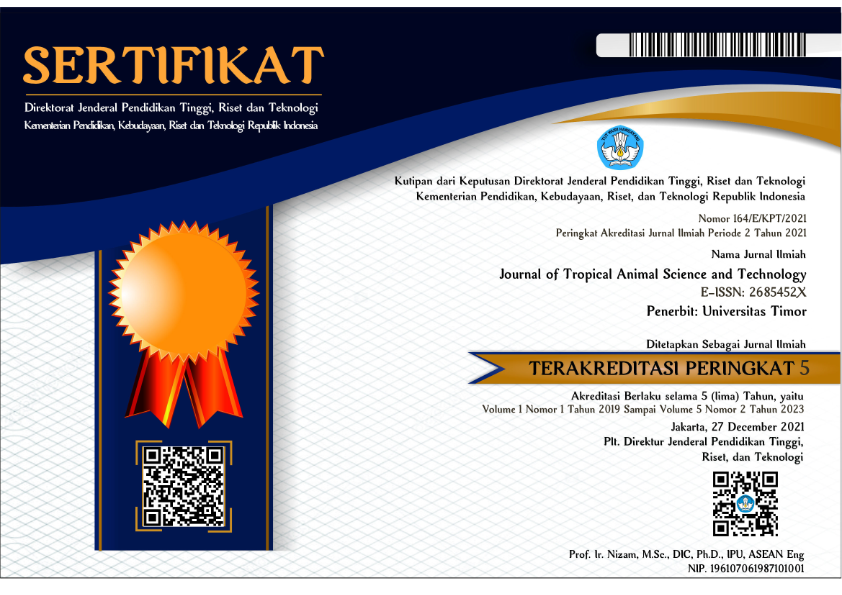The Effect of Black Kabesak (Acacia nilotica) Pods Supplementation Levels on Nursing Behavior of Ongole Female Culled Cows Fed Banana Stem, Rice Straw and Rice Bran as a Basal Diet
DOI:
https://doi.org/10.32938/jtast.v5i2.4508Keywords:
Acacia nilotica, banana stem, nursing behavior, rice bran, rice straw.Abstract
The purpose of this study was to evaluate the effect the effect of black kabesak (Acacia nilotica) pods supplementation levels on nursing behaviors of culled female Ongole cows fed banana stem, rice straw and rice bran as a basal diet. Three 8-9-year-old culled female Ongole cows (initial live weight 194-210.5 kg) were used in this study following a 3 x 3 Latin Square Design (LSD). The treatments were a basal diet and supplementation of A. nilotica 0% (P0), 0.5% (P0.5) and 1% (P1) of body weight, respectively. The variables observed were nursing behaviors which included length of nursing in the morning, noon and afternoon; milk consumption in the morning, noon and afternoon; total nursing length; and milk production. Data obtained from this study were analyzed using analysis of variance (ANOVA) of SPSS 23. The results showed that there were no different between treatments on nursing behaviors of culled female Ongole cows. It is concluded that supplementation of A. nilotica pods up to 1% of body weight could be used to feed culled female Ongole cows during nursing.























